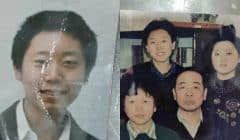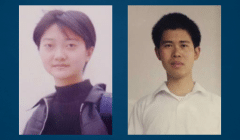Report of the Special Rapporteur on Torture and Other Cruel, Inhuman or Degrading Treatment or Punishment, Manfred Nowak MISSION TO CHINA (Excerpt)
III. THE SITUATION OF TORTURE AND ILL-TREATMENT
Analysis of communications of the Special Rapporteur
40. The Special Rapporteur recalls that over the last several years his predecessors have received a number of serious allegations related to torture and other forms of ill-treatment in China, which have been submitted to the Government for its comments. He cautions that such information does not necessarily illustrate the state of torture and ill-treatment in a given country, but rather reflects the state of information brought to the attention of the Special Rapporteur. Nevertheless, over a period of time, the number and consistency of the allegations received may be informative.
41. Since 2000, the Special Rapporteur and his predecessors have reported 314 cases of alleged torture to the Government of China. These cases represent well over 1,160 individuals. Over the past five years, the Special Rapporteur has received 52 responses rom the Government of China relating to a total of 90 cases.
2. The following table indicates the typology of the victims of alleged torture and ill-treatment.
Victims of alleged torture
| Victims |
Percentage |
|
Falun Gong practitioners |
66 11 8 6 5 2 2 |
45. The methods of torture alleged include, among others: beatings with sticks and batons; use of electric shock batons; cigarette burns; hooding/blindfolding; guard-instructed or permitted beatings by fellow prisoners; use of handcuffs or ankle fetters for extended periods (including in solitary confinement or secure holding areas); submersion in pits of water or sewage; exposure to conditions of extreme heat or cold; being forced to maintain uncomfortable positions, such as sitting, squatting, lying down, or standing for long periods of time, sometimes with objects held under arms; deprivation of sleep, food or water; prolonged solitary confinement; denial of medical treatment and medication; hard labour; and suspension from overhead fixtures with handcuffs. In several cases, the techniques employed have been given particular terminologies, such as the “tiger bench”, where one is forced to sit motionless on a tiny stool a few centimeters off the ground; “reversing an airplane”, where one is forced to bend over while holding legs straight, feet close together and arms lifted high; or “exhausting an eagle”, where one is forced to stand on a tall stool and subjected to beatings until exhaustion.
Several of these forms of torture have been corroborated by studies carried out by Chinese academics. On the basis of the information he received during his mission, the Special Rapporteur confirms that many of these methods of torture have been used in China.
The full report is available at: http://daccessdds.un.org/doc/UNDOC/GEN/G06/117/50/PDF/G0611750.pdf?OpenElement






